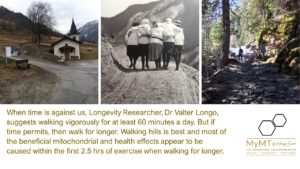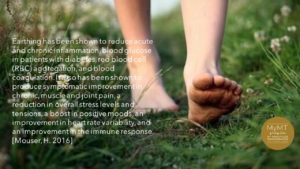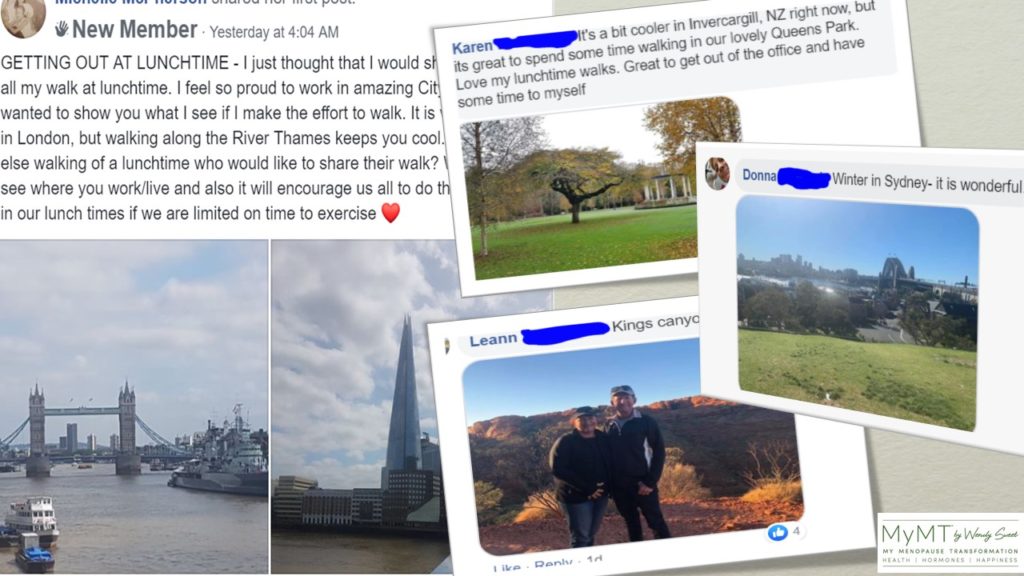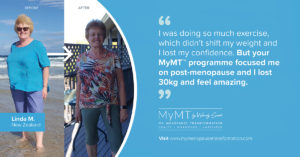Feeling socially isolated and talking to Physicians who didn’t understand the severity of their symptoms and the change that arrived to their quality of life, were all mentioned by women in a new study out of beautiful Edmonton in Canada that arrived in my email inbox over the past month. “Tired women will not walk” mentioned one participant, whilst another said, “we walk and talk. It’s something to achieve, you know, to look forward to, with others experiencing the same symptoms.”
Reading this study bought back memories of the women I interviewed for my doctoral studies – “You know, I love exercise, but I’m too tired all the time now that I’m in my 50s” said one participant. “I’m so confused about why I get injured all the time when I’ve been doing the same exercise for years” lamented another. (Sweet, 2018).
The isolation of menopause is something that doesn’t get much attention, but it needs to and I’m pleased that women participating in this Canadian study bought it to the attention of the researchers. Menopause and midlife are stages in a woman’s life that can be marked by debilitating symptoms that impact quality of life, as well as being a vulnerable time for health changes. Whilst the emphasis is often on medications and supplements, exercise remains a simple solution that has wide-ranging health benefits. Unfortunately, however, too much emphasis is being given to different modes of exercise that are higher in intensity. For many women, these may have too much impact on knees, feet and muscles that are changing as oestrogen and progesterone decline.

But what about walking? And what about walking with friends or colleagues? In my Masterclass on Menopause, I introduce women to one of the most important aspects of our healthy ageing – no, not exercise or nutrition, but social connection. Dr Susan Pinker, a Canadian Psychologist and Social Scientist is reknown for bringing social connection to the forefront of women’s health and wellbeing as they age. How interesting that the women interviewed in the walking study also mentioned that sharing their experience on how they were feeling and feeling supported by other women in their walking group, enhanced their feelings of coping and their perceptions of wellbeing.
In this fast-paced world, I call walking for exercise, ‘the forgotten factor in women’s health as they age’. That’s why, in my 12 week MyMT™ programmes, I have designed a 6 week walking programme – numerous women tell me that they print it out and post it to their fridge as their reminder to take action. Many also say that they go walking with a friend and this keeps them motivated too. I love hearing this. Walking and talking is good for women’s cardiovascular health in menopause.

But even if you don’t have someone to walk with, walking on your own is helpful too. It is well known that one of the challenges of menopause symptoms are increasing anxiety and the forgetfulness that arrives with a foggy brain. Walking on your own allows time to calm the mind and very simply, ‘think’.
‘Walking allows us to be in our bodies and in the world without being made busy by them. It leaves us free to think without being wholly lost in our thoughts. When we live our lives in cars and buildings and gyms, shopping malls and offices are we are constantly in ‘catch-up’ mode with all that is going on in our lives, in this respect, walking is a detour – a scenic route through a half-abandoned landscape of ideas and experiences.‘ (Solnit, 2000).
Thinking is generally thought of as doing nothing in a production-oriented culture, and doing nothing is hard to do for many mid-life women, bought up to constantly achieve. But as Rebecca Solnit mentions in her book, Wanderlust: A history of walking, Jean-Jacques Rousseau remarked, ‘I can only meditate when I’m walking. When I stop I cease to think.”
How much walking do you do? Perhaps for years, you’ve been heading to the gym and doing other forms of exercise instead? But what if that exercise is no longer helping your symptoms or changing joint function? What if your feet are sore becuase you have plantar fasciitis? What if you are overweight and find walking difficult? These are all issues I address in my programmes. If you find walking difficult, then it’s important that you turn around the inflammation that’s sending your hormones into chaos as well. I talk about this in the Joyful Joints module which you can read about HERE.

Walking is crucial to our health and our balance as we age. It’s important for feeding the mind, soul and for helping you to manage your changing cardiovascular health and any feelings of depression during your menopause transition.
Walking came from Africa, from evolution, and from necessity, and it went everywhere, usually looking for something, mentions Rebecca Solnit in her book, Wanderlust: A history of walking. We can walk anywhere (as long as it’s safe obviously), but I was reminded about walking thinking about how the cities are opening up over there in the UK. With new research emerging about ‘how much is enough for our health as we age’, I was reflecting on how, before the world turned to chaos and the cities were closed, Michelle shared photos of her lunch-time walk in London. The MyMT™ Coaching Community was enthused.
“I feel so proud to work in an amazing City that I wanted to show you what I see if I make the effort to walk. It is very hot here in London, but walking along the River Thames keeps you cool. Is anyone else walking of a lunchtime who would like to share their walk?”

What unfolded was amazing. So many women sharing their walk with us all. Leann was in the Northern Territory in a place called Kings Canyon. Karen was walking at the bottom of the earth in Invercargill, New Zealand. Natalie shared a photo from her walk along the waterfront in Petone, New Zealand. I shared a photo from my walk in Wanaka, and on a balmy day in Sydney, Donna shared the glorious blue sky and city landscape that was Sydney in winter. Lydia shared her walk at Paradise Point in Australia, the beautiful image which is below.

Walking at lunchtime during your busy day calms the soul and the nerves. As we move through menopause, our nervous system is also experiencing the effects of our ageing as we not only lose oestrogen on receptors along the nerve sheath, but because our blood vessels lose their elasticity too. For millions of women, these changes increase the rate of nerve firing causing them to feel anxious, irritable and exhausted. This is why walking or other aerobic activity helps. Aerobic activity is the type of activity whereby we breathe rhythmically and don’t get out of breath. The rhythmic movement of aerobic activity helps the nervous system to fire more regularly, thus decreasing feelings of anxiety.

It’s why walking is just one of my powerful recommendations for time-poor, exhausted women who are experiencing hot flushes, increased anxiety and depression and/or weight gain and sore joints and muscles, as they transition through menopause. Many women get so focused on high intensity exercise from fitness industry messages, but many women, as it was for me as well, insomnia, sore joints and muscles prevent the health benefits of the higher intensity exercise. That’s why in my 12 week programmes I help women sort out their sleep, hot flushes, anxiety and/or weight and joint problems before they do too much exercise.
The other thing that I teach women, is that when we do a lot of high intensity exercise and we aren’t sleeping, then we increase our stress hormone called cortisol, which negates sleep.
I just spoke about this recently to Personal Trainers in Australia via a fitness education podcast. Not one of them knew this. But when we do too much high-intensity exercise and we aren’t sleeping, then our body goes into distress. This leads to a vicious cycle of exhaustion and depression or mood swings as our blood sugar crashes. What’s more, when we aren’t sleeping we may also hold onto pockets of inflammation which causes more havoc with our hot flushes and sore joints. Women in the MyMT™ programmes, know that exercise is important, but sleeping all night is more important to our health as we age. Sleep all night first, turn around joint health and then add back in exercise.

Walking is one of the simplest activities that we can do for our healthy exercise – except when our ankles and lower legs are swollen and inflamed and we find walking is too hard. If this is you, then your priority is to reduce the inflammation that has been building up and improve your ageing lymphatic system. I talk about this in the Masterclass.

How Much is ‘Enough’ Walking?
When it comes to understanding walking, there is no-one more expert in this subject than Professor I-Min Lee. She has been studying physical activity for decades. As an Associate Epidemiologist at Brigham and Women’s Hospital and a Professor of Medicine at Harvard Medical School, she decided to explore the basis for 10,000 steps and whether this was a realistic target for older women to be achieving. She and her research team decided to explore the popular premise whether 10,000 steps a day provides a dose-response relationship for the health of post-menopause women. I’m pleased she did.
A goal of 10,000 steps a day is the ‘gold standard’ for millions of people. Over the past decade or so, this benchmark has also sold a huge number of step-counting devices as well as inspired team challenges throughout companies the world over. These are known as ‘wearable technologies’ and over 125 million units were shipped worldwide when this technology first arrived in 2017. That’s a lot of step-counting. And whilst the 10,000 step phenomenon arrived off the back of a marketing campaign to get more Japenese people walking, it’s still an important goal to achieve, especially for women who are time-poor and struggling with changing cardiovascular health in mid-life.
For busy women transitioning through menopause and into post-menopause, 10,000 steps is a challenging number to achieve every day especially when joints and muscles often become sore and aching. I was the same, which is why I designed you a fabulous joint health webinar – this is in all my foundation 12 week programmes, but during lockdown I also made it available for those of you who would like this as a stand-alone module. The details are here.
Physical activity participation research continues to show a decline in physical activity for women over the age of 50 years who are the highest cohort (along with adolescence girls) to drop out of regular physical activity. With our exhaustion and being time-poor, I’m not surprised. Professor Wendy Brown and her team have been studying this for over 30 years in Australia. And here’s the thing – I can attest to this as well. When I wasn’t sleeping and had sore joints and muscles, felt dizzy and my weight was increasing daily, the last thing I felt like doing was my beloved exercise – especially with the emphasis on boot camps, high intensity workouts and a ‘go-hard, or go-home’ training mantra. I wish I had known about Professor Min-Lee’s work at the time.
Where did 10,000 steps originate?
The 10,000 steps protocol originated back in 1965 when a Japanese company made a device called Manpo-kei. The translated to ’10,000 steps meter’ and it was intended as a marketing tool. So began the notion of needing to achieve 10,000 steps in our health consciousness. Because Professor Min-Lee had already been studying the relationship between physical activity and health in older women, she took her 10,000 steps curiosity to this demographic too. I’m so pleased that she did. The research looked at over 16,000 women aged between 62 years to 101 years and for 4 years between 2011 and 2015, all participants wore tracking devices during waking hours.
The researchers wanted to explore whether increased steps were associated with fewer deaths. The findings from the study are important for us all to know – especially for those women struggling to find the time, energy and motivation to exercise. The key findings from the study include:
- Sedentary women averaged 2,700 steps a day.
- Women who averaged 4,400 daily steps had a 41% reduction in mortality.
- Mortality rates progressively improved before leveling off at approximately 7,500 steps per day.
As the researchers concluded, if you want to prevent an early death, then walking matters, but some is better than none. So, if mortality — death — is your major concern, this study suggests you can reap benefits from 7,500 steps a day. That’s 25% fewer steps than the more common goal of 10,000 steps.
“Every step counts” says Professor Min-Lee, “but don’t be intimidated by having to get 10,000 steps if you are a woman in post-menopause.”
I often share these pointers with women on my coaching programme. If you’re typically sedentary then you are probably doing around 2000 steps daily just in your day to day movement, so try to add 2,000 more daily steps. this will give you an average of at least 4,400 daily steps. While 2,000 steps equals one mile (2.2km), it’s not necessary to walk it all at once. Instead, try to take extra steps over the course of each waking hour.
This is great advice for all of us. That’s why I loved seeing the images shared my some of the women on the MyMT™ coaching programmes. All were out walking during their busy, working days. For many, a brief walk at lunch-time or early in the morning before the trials and tribulations of the day starts is just one of the changes they are making to get on top of their symptoms in menopause. I love this, because we all have to start somewhere and for over 30 years, it’s been my passion and purpose to enable women to become active again.

If you are feeling that your motivation is at rock bottom because you aren’t sleeping and you feel exhausted all the time, then please come and join me on either of the MyMT™programmes. I have included the Joyful Joints module and Gut Health Restoration module and an Intermittent Fasting module in these 12 week programmes and of course, there is my progressive 6 week walking programme as well as all the scientifically evidenced lfestyle and nutrition information, which will help you to sleep all night, reduce your hot flushes and renew your energy levels so you can get your life back on track.

Each programme is accessed via your exclusive member area and over the 12 weeks, my progressive online delivery means that you access one module at a time so it’s not too overwhelming. I hope that you can visit the My Menopause Transformation website and read about Circuit Breaker (for thinner/ leaner women) or Transform Me (for overweight women) and/or my online exercise programme which is simply called ‘Rebuild Your Fitness’.
I can’t wait for you to join me. You’ll love my private coaching community too. It’s full of women just like you.
Dr Wendy Sweet, PhD/ Women’s Healthy Ageing Researcher & MyMT Founder & Coach.
PS: As the world begins to open up, my lockdown promotion ends on June 30th. This gives you savings of NZ$50/ UK£25 and please use the promo code ATHOME21 when you purchase. Or start small and listen to my powerful online webinar which is based on my live-events and is now available for you online. Details HERE for you.

References:
I-Min Lee, Shiroma, E.,Masamitsu K. et.al, (2019). Association of Step Volume and Intensity With All-Cause Mortality in Older Women. JAMA Intern Med. Published online May 29, 2019.
Solnit, R. (2001). Wanderlust: A history of walking. Penguin Books.
Sydora, B.C., Alvadj, T., Malley, A. et al. (2020). Walking together: women with the severe symptoms of menopause propose a platform for a walking program; outcome from focus groups. BMC Women’s Health 20, 165, 1-4. https://doi.org/10.1186/s12905-020-01037-y

